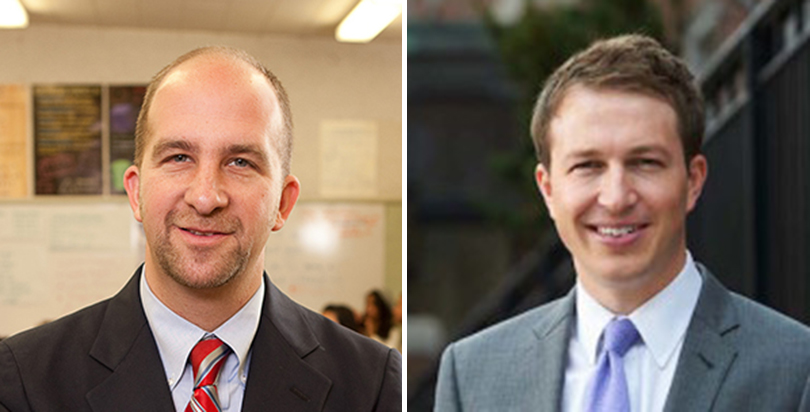Could Low Voter Turnout Be a Game-Changer in Tuesday’s Historic L.A. School Board Election?

This article was produced in partnership with LA School Report
It’s tough to make predictions of voter turnout in Los Angeles city elections — not even the city clerk does it, but a surefire bet is that despite the most money ever spent on a school board election in U.S. history, there will still be a poor turnout.
(Background on the 2017 election: What’s really fueling the most expensive school board race in U.S. history)
Past LA Unified elections show that interest in the school board is minimal. “I should be embarrassed over how low the turnout was for me in the past. It’s shameful,” said George McKenna, who got less than 5 percent of the eligible voters in his district in South Los Angeles the last time he ran for office in a runoff in August 2014. “I’m not sure how many people even know who we are or what we do. But the school board is important.”
When McKenna first ran in a June 2014 special election after the death of Marguerite LaMotte, there were six people running against him, and he received nearly 6 percent of the eligible voters in his district. In the August runoff, it was a special stand-alone election and the school board seat was the only item on the ballot. Less than 5 percent of the voters of the 324 precincts in his district voted for him.
More people, 9 percent of eligible voters, cast ballots for McKenna when he ran unopposed in 2015.
School board races don’t necessarily draw many voters, but when they are by themselves as stand-alone items on the ballot, the turnout is even worse. In this election, the school board race and the Amendment C about city police will be on the city ballots, and in parts of District 6 there is a runoff for the Los Angeles City Council.
When there are other items on the ballot, turnout is larger. In the mayor’s race in the 1997 primary, 29 percent of the voters in the LA Unified districts turned out to vote. In District 4, where school board president Steve Zimmer is now in a heated race against Nick Melvoin, 28 percent of the electorate voted in 1997. In District 6 in 1997, where newcomers Kelly Gonez and Imelda Padilla are fighting to replace Mónica Ratliff, 29 percent turned out. But when it came down to a runoff in District 4 that year, only 13 percent bothered to show up. Winner Valerie Fields received 7 percent of eligible voters in the district: 26,659 votes.
But things got a bit heated in District 4 when Fields was up for re-election, and that resulted in the largest turnout for any school board race in the past 20 years — and there are some uncanny similarities to what is going on in the west side district today.
In that June 2001 race, 38 percent of the school district’s eligible voters turned out. It was described in the Los Angeles Times as “an aggressive race” when union-supported Fields was forced into a runoff by self-described “independent thinker” Marlene Canter, who was supported by then–Los Angeles Mayor Richard Riordan (now a big supporter of Melvoin).
Things got ugly, as Canter accused Fields supporters of tearing down her neon lawn signs that read: “L.A. School Board Member Valerie Fields has FAILED.”
At the time, $4 million was the most ever raised for a school board race, and it dwarfed the local city council race between well-known heavyweights former state Sen. Tom Hayden and ex–federal prosecutor Jack Weiss. Canter ousted Fields.
This year, in District 4, an incumbent who is heavily supported by labor unions is forced into a runoff by a candidate who is also supported by Riordan. And the campaign is the most expensive ever, like it was then — only now it’s nearly three times as expensive.
When Zimmer first won election to the board, in the March 2009 primary, with 57 percent of the vote, a full 8 percent of his vote came from Beverly Hills (which has parts of the city in the school district). In his primary win in March 2013, 7 percent of Zimmer’s vote came from the incorporated city of West Hollywood.
During another heated race, this time in District 6, in May 2013, Mónica Ratliff was widely outspent by Antonio Sanchez. At the time, only 16 percent showed up to vote for the school board race.
The longest-serving board member, Mónica García, attracted 5 percent of her district’s voters in District 2 in a special election in March 2006. Barely 12 percent of her district’s eligible voters in 199 precincts voted in that election.
Even in the last major school board election, in May 2015, when three school board members were up for election and two incumbents were tossed out, only 8.5 percent of the voters showed up.
Turnout was better in March of this year, when 16 percent of those in the school districts voted in the primary election, but there were other items, like the mayor’s race, on the ballot.
The LA City Clerk’s office doesn’t make predictions of how many people will turn out to vote, but if history is any indicator, the poll workers in District 4 and 6 will have plenty of down time.
Read all of LA School Report’s coverage of the 2017 school board race
Get stories like these delivered straight to your inbox. Sign up for The 74 Newsletter

;)
